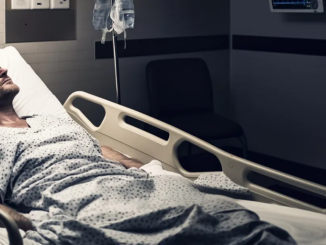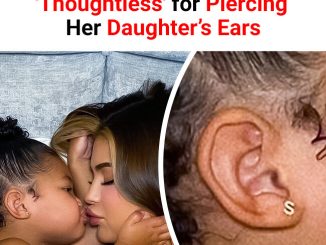If I asked you to name the strongest animal on Earth, you’d probably think of something huge and powerful like an elephant, lion, or even a bear, right? But what if I told you there’s an animal smaller than a grain of sand that can put all these mighty creatures to shame? Sounds unbelievable, doesn’t it? Well, believe it or not, it’s absolutely true! Meet the oribatid mite—a microscopic powerhouse that lifts loads that would crush even the strongest humans.
Let’s dive deeper into this tiny yet incredibly strong creature and discover exactly how it manages such amazing feats.
Meet the World’s Strongest Animal: The Oribatid Mite

Oribatid mites aren’t exactly celebrities in the animal kingdom. You probably haven’t even heard of them before today. These tiny creatures weigh less than 25 micrograms—that’s smaller and lighter than the grains of sand you casually brush off your hands at the beach. Yet, despite their minuscule size, oribatid mites pack a muscular punch that’s simply extraordinary.
Scientists have observed these microscopic creatures lifting objects up to 1,180 times their own body weight. To put this into perspective, imagine if you could lift a massive cargo ship or about 82 tons. Sounds impossible, doesn’t it? But that’s exactly the kind of strength oribatid mites exhibit daily. It’s an awe-inspiring example of nature’s hidden wonders.
Why Are Oribatid Mites So Amazingly Strong?
You might wonder, how is it even possible for something so tiny to achieve strength on this superhuman level? Well, it all boils down to some fascinating biology and physics working hand-in-hand.
Video : Meet the Tiny Mite That’s Stronger Than Superman
Incredible Muscle-to-Body Ratio
One reason oribatid mites are freakishly strong is due to their unique muscle-to-body-weight ratio. Because they don’t have heavy internal skeletons like humans or elephants, their bodies can pack in a higher percentage of pure muscle. Think of it this way: imagine a weightlifter who’s all muscle and no extra fat—that’s essentially what an oribatid mite is like, just on an incredibly microscopic scale.
The Advantage of Their Small Size
Additionally, their tiny size contributes massively to their strength. Oribatid mites have a large surface-area-to-volume ratio. This ratio allows their muscles to operate more efficiently with significantly less energy waste. Simply put, their small muscles expend far less energy moving their lightweight bodies around. The result? Extra strength to spare for lifting and carrying heavier objects.
No Internal Skeleton Means Less Weight, More Strength
Here’s another fascinating fact: oribatid mites, like most insects and arthropods, possess an external skeleton (exoskeleton) rather than internal bones. This exoskeleton provides strength and protection without the heaviness associated with internal bones. Less internal weight means more muscle space, translating directly into incredible lifting power.
Habitat and Life of the Mighty Oribatid Mite
Now, you might be curious—where exactly do these tiny champions live? Surprisingly, oribatid mites are incredibly common. In fact, they dominate many forest floors and soil ecosystems worldwide. Hidden among decaying leaves, organic matter, and damp soil, oribatid mites quietly play essential roles in maintaining ecological balance.

Beneficial Contributions to Ecosystems
Oribatids aren’t just impressive weightlifters—they’re environmental heroes too. These mites actively improve soil quality by aiding seed dispersal, breaking down organic matter, and controlling populations of harmful parasites and insect pathogens. By keeping soils healthy, they indirectly support plant growth, animal health, and even human agriculture.
Slow Growth but Long Evolutionary History
Despite their impressive strength, oribatid mites live life at a leisurely pace. They have low metabolic rates, grow slowly, and take anywhere from a few months to two full years to mature from egg to adulthood. Interestingly, their life cycle is remarkably complex, going through six distinct developmental stages—pre-larval, larval, three pupal stages, and finally adulthood.
And here’s something even more incredible: these tiny mites have likely roamed Earth’s soils for 300 to 400 million years. That means oribatids have outlasted dinosaurs, ice ages, and countless other species, quietly thriving and evolving beneath our feet.
What Can We Learn from Oribatid Mites?
Beyond their awe-inspiring strength and resilience, oribatid mites offer us powerful lessons about adaptation and efficiency. They demonstrate vividly that size doesn’t always correlate with power or importance. Their success in nature results from perfect adaptations to their environment, optimized anatomy, and the efficiency of their muscles.
Video : Oribatid mite (Acari: Cryptostigmata) from soil at Ibaraki Prefecture, Japan
Think about it—what if humans could mimic even a fraction of this efficiency? We’re always looking to build stronger yet lighter materials, more powerful yet smaller machinery. The oribatid mite, tiny as it is, might just provide inspiration for future advancements in technology, engineering, and biomechanics.
Conclusion: Celebrating the Tiny Giant of the Animal World
So, the next time you think about powerful creatures, don’t limit yourself to elephants, gorillas, or lions. Remember the astonishing oribatid mite, a tiny animal no bigger than a grain of sand, capable of lifting unimaginable weight relative to its body size.
These mites remind us vividly that power isn’t always about size or strength that you can easily see. Sometimes, real strength is hidden in the smallest creatures on Earth, patiently living beneath our notice. Isn’t that fascinating? Nature truly never stops surprising us.
From their exceptional strength to their important ecological roles, oribatid mites are remarkable creatures deserving more recognition. Let’s celebrate these tiny yet powerful champions that teach us valuable lessons about strength, efficiency, and adaptation.
Next time you stroll through a forest, take a moment to consider the microscopic miracles happening beneath your feet—you just might be walking above the strongest animals on the planet!
TEEN IDOL AND ‘T.J. HOOKER’ LEGEND JAMES DARREN DIES – HOLLYWOOD IN MOURNING

James Darren, the beloved teen idol and star of “T.J. Hooker,” has sadly passed away at the age of 88. His son, Jim Moret, confirmed the unexpected news on Monday, September 2. Details about how Darren died were shared online, providing fans and the public with the unfortunate circumstances surrounding his passing.
James Darren, known for his role as the charming surfer in the classic film “Gidget” alongside the late Sandra Dee, passed away in his sleep at Cedars-Sinai Medical Center in Los Angeles. His son, Jim Moret, shared that the beloved actor died peacefully during his rest.

James Darren’s son, Jim Moret, revealed that his father had been admitted to Cedars-Sinai Medical Center the week before his passing to undergo an aortic valve replacement. Sadly, James was too weak to go through with the procedure.

The day before James Darren passed away, he was rushed back to the hospital. His son, Jim Moret, said that the family was shocked by his sudden death. Jim explained, “It was kind of a surprise to be quite honest with you. I mean, we knew that he was not well, but we didn’t expect this.”

Jim Moret, who is a chief correspondent for “Inside Edition,” shared that in his father’s final moments, James Darren was able to express his love for his family. James, known for his role in “Gidget Goes to Rome” and his influence on the 1960s surfing craze, passed away peacefully without experiencing any pain.
Jim Moret expressed his deep sadness over his father’s passing, saying, “I always thought he would pull through because he was so cool. He was always cool.” These heartfelt words highlight the remarkable legacy James Darren leaves behind as a beloved singer and teen idol.
James Darren’s son, Jim Moret, shared that his father had a special moment with his grandchildren when they saw him perform at the South Point Hotel in 2018. Jim spoke about how meaningful it was for his children to witness James’ talent and share in those artistic experiences.
Jim praised his father’s impressive skills, saying, “He had the swagger, voice, talent, and charm. Their grandfather was cool.” He admired how James Darren’s success extended beyond acting to music, with several hits on Billboard’s Hot 100.
In 1961, James Darren’s song “Goodbye Cruel World” reached number three on the Billboard Hot 100. The following year, his hit “Her Royal Majesty” climbed to number six, and “Conscience” also made the chart, landing at number eleven.
In 1961, James Darren’s song “Goodbye Cruel World” reached number three on the Billboard Hot 100. The following year, his hit “Her Royal Majesty” climbed to number six, and “Conscience” also made the chart, landing at number eleven.
James Darren, known for his success as a singer and actor, also directed popular TV series like “Melrose Place,” “Hunter,” “The A-Team,” and “Beverly Hills, 90210.” He is survived by his sons, Jim, Christian, and Tony Darren, his five grandchildren, and his wife, Evy Norlund.
James Darren, who was also the godfather to Nancy Sinatra’s daughter, A.J. Lambert, received a heartfelt tribute from Nancy Sinatra following his passing. She shared her grief on X, describing James as one of her dearest friends and wishing him a peaceful journey. Nancy also mentioned that it was comforting to know James and other legends are honored together in their hometown.
Our deepest condolences go out to James’ family as they remember an iconic entertainer, loving husband, father, and grandfather.



Leave a Reply